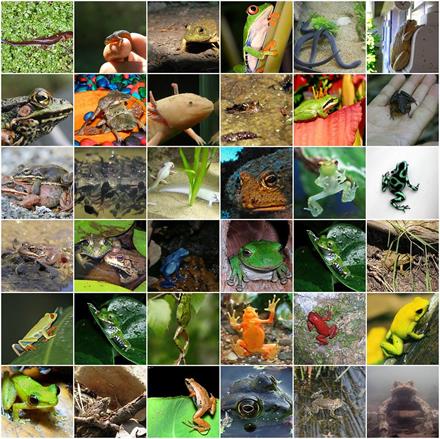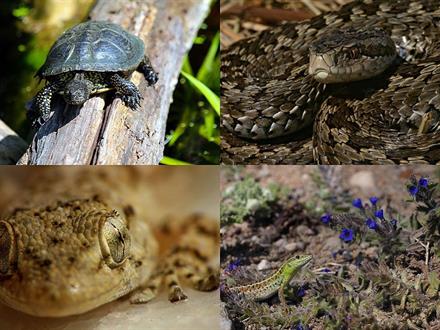PDF chapter test TRY NOW
Class Amphibia:
These are animals that differ from the fishes as they lack scales. Their skin consists of mucus glands. They are found in both water and on land.
Other characteristics:
- They consist of a three-chambered heart.
- These animals use gills or lungs as their respiratory organs. They use their gills in the larval stage, which is found in water and lungs in the adult stage, which is found on land.
- They are egg-laying animals and lay their eggs only in water.
- Like fishes, they are cold-blooded animals.
Example:
Toad, Hyla (tree frog), frogs (Rana tigrina) and salamanders

Class Amphibia
Class Reptilia
These are animals that have dry scales on their body. They are found on both lands and in water.
Other characteristics:
- They have a three-chambered heart. The crocodile is an exception as it has a four-chambered heart.
- These are cold-blooded animals.
- They use the lungs as their respiratory organs.
- They are egg-laying animals. Their eggs consist of tough coverings. Due to this, they do not require water for laying eggs, unlike amphibians and lay them on land.
Example:
Turtles, snakes, lizards and crocodiles are some of the examples. Hemidactylus frenatus is the scientific name of house wall lizard. Draco Volans is the scientific name of flying lizard.

Phylum Reptilia
Reference:
https://www.flickr.com/photos/tim_ellis/2452232957
https://upload.wikimedia.org/wikipedia/commons/thumb/e/e5/European_reptiles_collage.jpg/1024px-European_reptiles_collage.jpg
